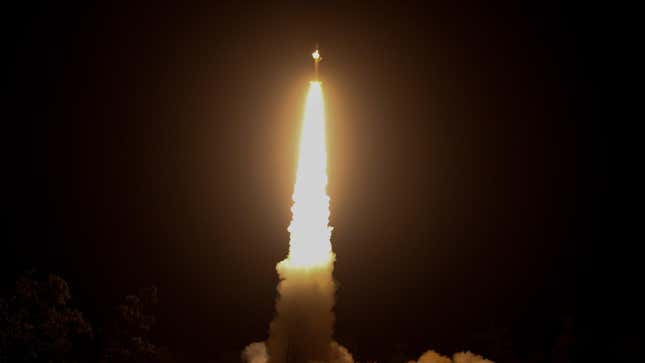
NASA launched a rocket from Australia’s Northern Territory yesterday, marking the agency’s first launch from down under in over 25 years, as well as its first launch from a commercial spaceport outside of the United States.
The launch occurred yesterday at the Arnhem Space Center on the Gove Peninsula in Australia’s Northern Territory. The launch was an agreement between NASA and Equatorial Launch Australia (the company that owns the space center), making it NASA’s first commercial launch from the continent, and also the first commercial space launch in Australia’s history. Arnhem Space Center is also the only commercial-run multi-user equatorial launch site in the world, according to ELA, and this launch is the first of three that NASA has planned in order to study how interstellar radiation might affect the habitability of distant exoplanets.
Yesterday’s launch involved a Black Brandt IX suborbital rocket, which launched at 10:29 a.m. ET and reached an altitude of over 200 miles (321 kilometers). The rocket’s payload was the X-ray Quantum Calorimeter, an instrument that will collect interstellar X-rays from mysterious sources deep in our galaxy in order to understand the evolution of stars and galaxies. NASA notes that these studies need to be conducted from the Southern Hemisphere since only a portion of the X-ray emissions of interest can be seen from the Northern Hemisphere. The two remaining missions will study radiation from the Alpha Centauri system.
“Ultraviolet radiation from the Sun played a role in how Mars lost its atmosphere and how Venus turned into a dry, barren landscape,” explained Brian Fleming in a NASA press release. Fleming is an astronomer at the University of Colorado Boulder and principal investigator for the Dual-channel Extreme Ultraviolet Continuum Experiment, or DEUCE, which will fly on the second of three NASA missions from Arnhem. “Understanding ultraviolet radiation is extremely important to understanding what makes a planet habitable.”
The two remaining missions, scheduled for July 4 and July 12, will carry instruments from the University of Colorado Boulder. The July 4 launch will carry the Suborbital Imaging Spectrograph for Transition region Irradiance from Nearby Exoplanet host stars, or SISTINE for short. This mission will collect data for studying how ultraviolet radiation from stars can affect the atmospheres of nearby planets. The July 12 launch will carry DEUCE on a mission to collect measurements from a specific region of the ultraviolet spectrum that NASA says has previously been understudied; these measurements can then be used to create more accurate models of stars and explain how their radiation can affect exoplanetary atmospheres.
Monday’s launch reveals the extent to which NASA is now relying on private firms, and how international partnerships fit into this equation. The ongoing commercialization of space, as we’re increasingly seeing, is a truly global phenomenon.
More: A Mars Spacecraft Has Been Running on Windows 98 Era Software for 19 Years, But No More.